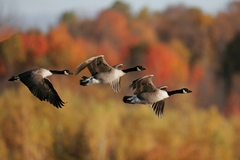EFSA calls for enhanced surveillance and strict biosecurity amid avian flu detections in wild birds
Key takeaways
- EFSA reports a fourfold year-on-year increase in HPAI detections in European wild birds, reaching the highest levels since 2016.
- Waterfowl and cranes experienced major mortality events, with most cases linked to a new A(H5N1) variant spreading across Europe.
- EFSA urges strengthened biosecurity, enhanced surveillance in domestic and wild birds, and rapid removal of carcasses to limit virus spread.
The European Food Safety Authority (EFSA) has published its latest update on avian flu detections among wild birds in Europe. Data show that there were 1,443 detections of the highly pathogenic avian influenza (HPAI) A(H5) virus. These were reported in wild birds across 26 European countries over three months, from September 6 to November 14, 2025.
EFSA states that this is four times higher than the same period in 2024, and it is also the highest since at least 2016.
Waterfowl and cranes are affected
The review of avian flu shows that most of the HPAI virus detections (99%) were reported as A(H5N1). The majority were also a new variant of a previously circulating strain that was initially introduced into Europe from the east before spreading west.
There were high-mortality outbreaks in common cranes in Germany, France, and Spain, while waterfowl were heavily affected by HPAI across various parts of Europe during the three months.
EFSA’s biosecurity recommendations
The agency emphasizes that individuals involved in domestic poultry production, wild bird management, and those responsible for mammals at risk of avian influenza should implement a series of biosecurity measures to prevent the spread of the virus.

These include issuing housing orders for domestic birds in areas with confirmed HPAI in wild birds or mass mortality events, and enhancing surveillance in domestic birds to facilitate early detection of infection in poultry establishments.
EFSA also recommends enhanced wild bird surveillance in wetland areas and migratory stopover sites within and outside Europe, and the prompt removal of wild bird carcasses to reduce environmental contamination and the risk to domestic birds and mammals.
The agency also highlights its range of monitoring and awareness-raising tools to help bring down the number of cases.
Its Bird Flu Radar monitors the probability of the introduction of the HPAI virus in wild bird populations in Europe. It can be accessed by all and supports farmers and veterinarians in implementing biosecurity on poultry farms.
This EFSA update closely follows the UK’s Department of Agriculture, Environment and Rural Affairs (DAERA), introducing a series of control measures following a suspected case of HPAI being discovered in commercial poultry premises in County Tyrone, Northern Ireland, in October.
Earlier this year, the US government allocated US$1 billion to combat avian flu and safeguard the US poultry industry.













